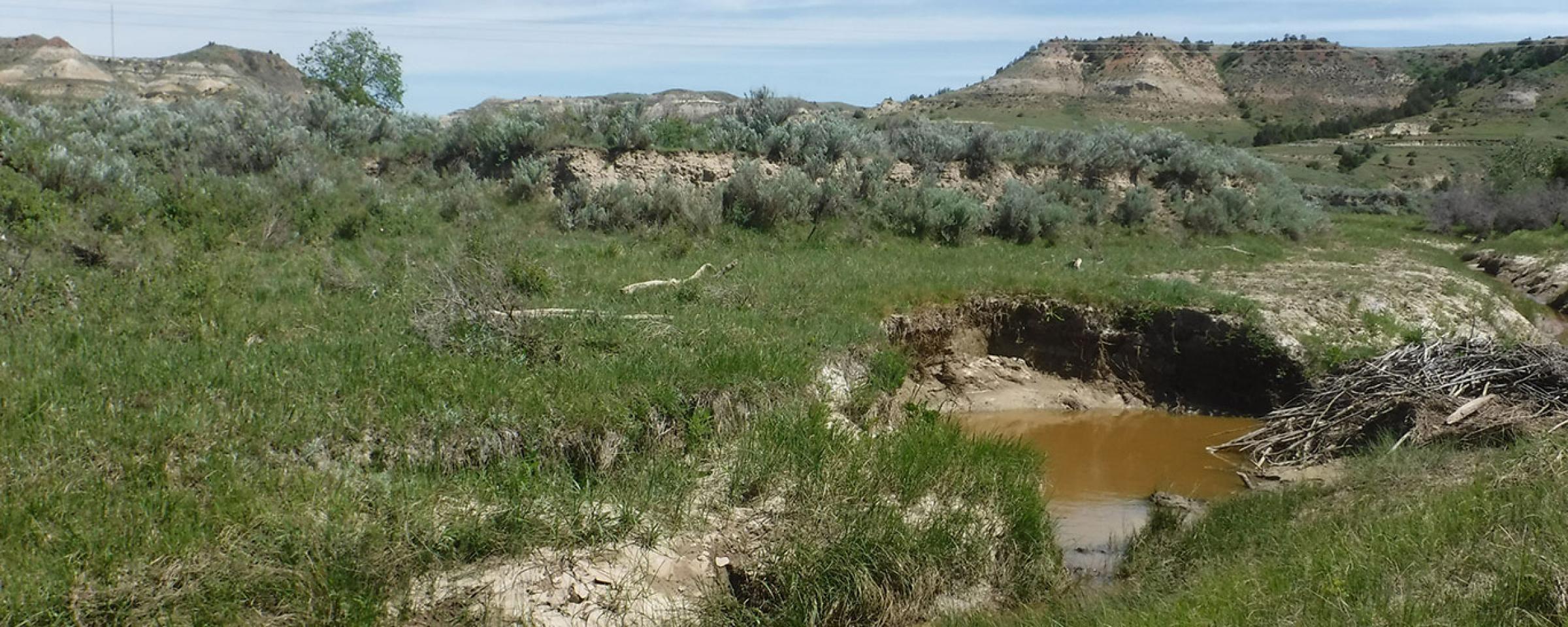
Forgotten Fish of Western North Dakota's Small Streams
North Dakota’s western landscape is drained by a network of small streams inhabited by distinct, complex communities of fish and other aquatic life.
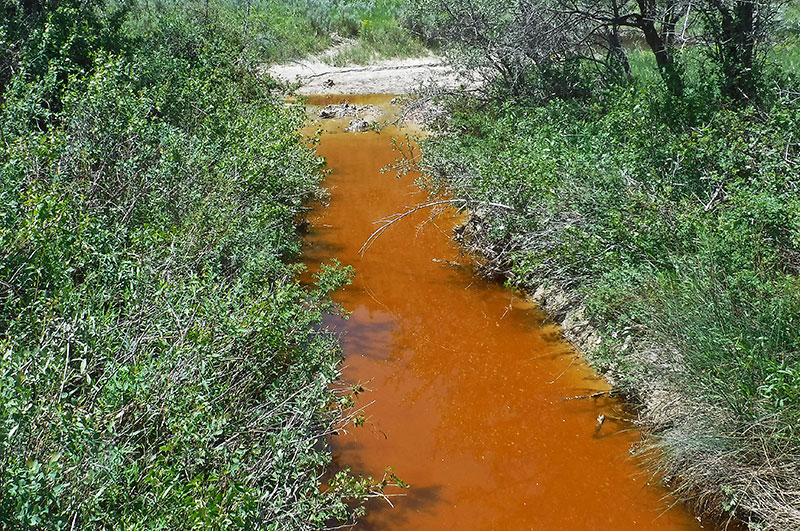
Both photographs (page top photo and photo above) show different sections of Davis Creek in western North Dakota. Despite the color, and lack of clarity of the water, some fish species live in this murky habitat.
While most such streams, whether continuously flowing or intermittent, only contain fish too small to interest anglers, their value lies elsewhere. Many of the species are uniquely adapted to withstand the naturally harsh conditions here, and they remain important remnants of the increasingly rare, undomesticated North Dakota.
The badlands, a symbol of western North Dakota, were carved between 600 and 700 thousand years ago when glaciers diverted the path of the Little Missouri River. This diversion caused the river to occupy a shorter, steeper path, leading to the eroded landscape of the badlands today. At the end of the last ice age, between 12,500 and 10,000 years ago, rolling prairies replaced the forests that covered much of the region prior to glaciation as the climate became drier and more temperate. In the past 150 years, the area has changed from open, uninterrupted expanses of grasslands grazed only by bison and other native animals, into farms, ranches, towns, cities, railroads, scoria roads and highways.
Today, western North Dakota streams flow through either badlands or rolling prairies. Badland streams drain the Little Missouri River basin within the river’s historic floodplain. The hillslopes have eroded over time and have little vegetation protecting them from further erosion. Many badlands streams have wide, shallow channels and many become dry, except for pools during low flow periods of late summer.

Sand shiner
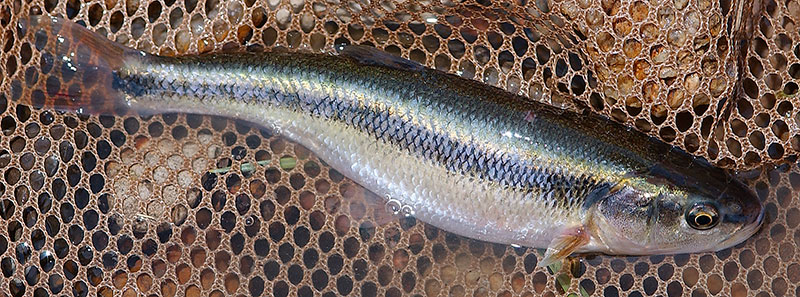
Creek chub
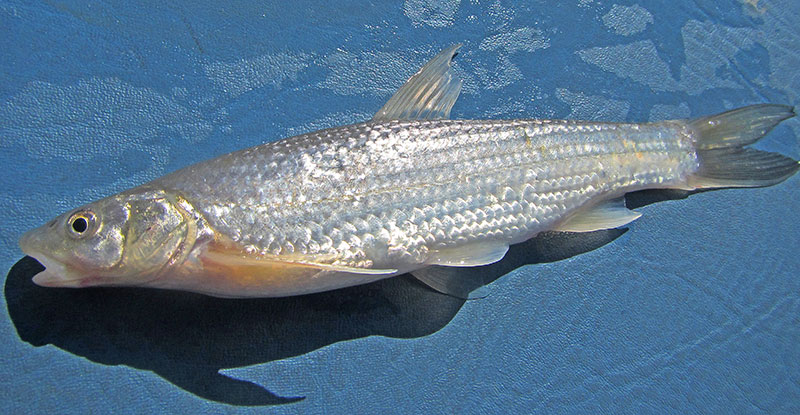
Flathead chub
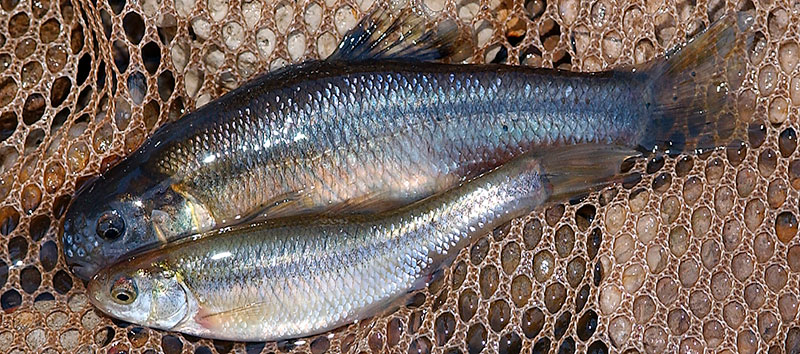
Male (top) female fatheads
Rolling prairie streams are located in more upland areas, farther from larger waters such as the Little Missouri River, and drain undulating plains and gentle slopes. They have more vegetation along their banks, such as grasses and woody shrubs, and more aquatic plants than the badland streams. Their channels are more stable and trench-like, carry less sediment than badland streams, and typically have stream bottoms of sand and silt. They are also less likely than badlands streams to dry up in late summer.
Fish surveys of both types of streams over the past few decades, sponsored by the U. S. Forest Service, have found differences in habitat between the two stream types that result in very different communities of fish species. In fact, the two stream types often have only 20 percent of their fish species in common.
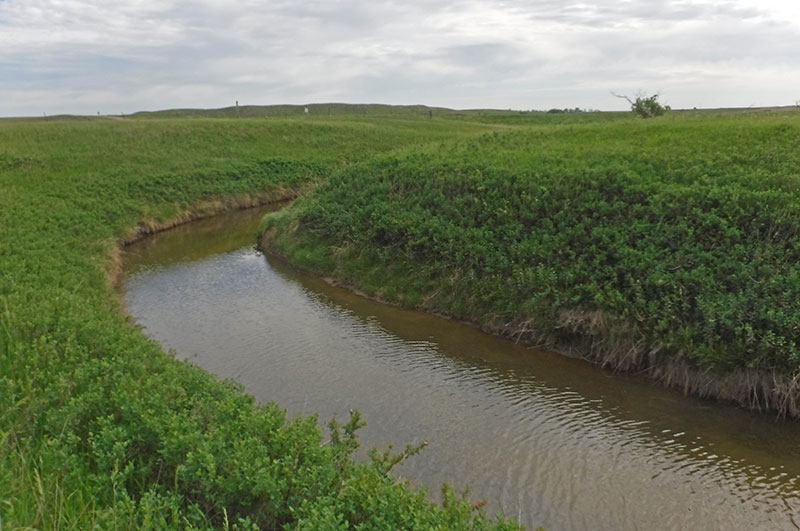
The Cannonball River is a rolling prairie stream.
Badlands streams often contain plains minnows and flathead chubs. The plains minnow is especially suited to use turbid, shallow, sand-filled channels. Plains minnows require some strong current during some portions of their life cycle, and typical badland streams are subject to sudden, drastic spring run-off events that would favor this requirement.
The flathead chub, a North Dakota Game and Fish Department Species of Conservation Priority, also prefers turbid flowing waters, with moderate to strong currents. Both species have distinct physiological adaptations to turbid habitats, such as reduced emphasis on sight feeding and greater emphasis on sensing their food in other ways, such as smell and taste. Flathead chubs are equipped with abundant taste buds on the snout, pectoral fins and whiskers (barbels), which allow them to detect food nonvisually in the turbid fluctuating flows of badland streams.
Both species have the ability to occupy streams subject to rapidly changing habitat and water quality by moving around seasonally to make the most out of their unpredictable environment. As a result, sometimes the inhabitants of a stream are the species best able to recolonize and re-establish populations following drought.
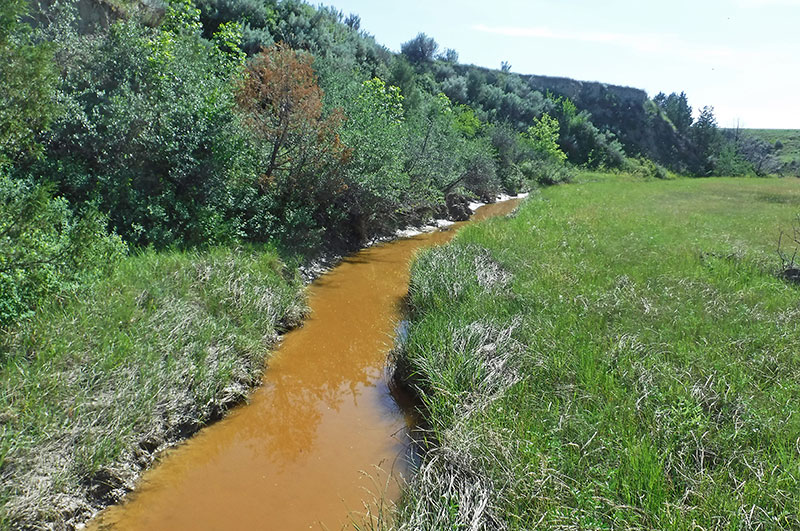
Bear Creek in western North Dakota.
Rolling prairie streams are commonly inhabited by species such as brook sticklebacks, fathead minnows, white suckers and creek chubs. Although sometimes found in both stream types, the brook stickleback prefers cold, clear to slightly turbid still waters, with moderate to dense aquatic vegetation. Sticklebacks are weak swimmers. Flood events can wash them out of small streams that have little cover.
Fathead minnows are found in a wide range of habitats due to their high tolerance for extreme temperatures, turbidities and low dissolved oxygen, but they tend to prefer pools with silty, still water in both permanent and intermittent streams. Creek chubs are opportunistic feeders of many rolling prairie streams.
Some of the higher-quality habitat streams also contain the northern redbelly dace. This species, which is much more common in rolling prairie streams than in badland streams, prefers quiet waters laden with woody debris, detritus or silt, and is often associated with beaver ponds. Their preference for cool, clear, standing water habitats off of main channels, usually containing cool springs, aquatic plants, and lacking large predator fishes, accounts for their overall scarcity in the region, and for their designation as a Species of Conservation Priority. Pristine habitats preferred by the northern redbelly dace are uncommon in western North Dakota.
Many of the less stable badlands streams dwindled into a series of pools, some even dried up completely. The predictable result was less stable fish communities. In both streams types, though, fish densities tend to be greater in larger, deeper pools.
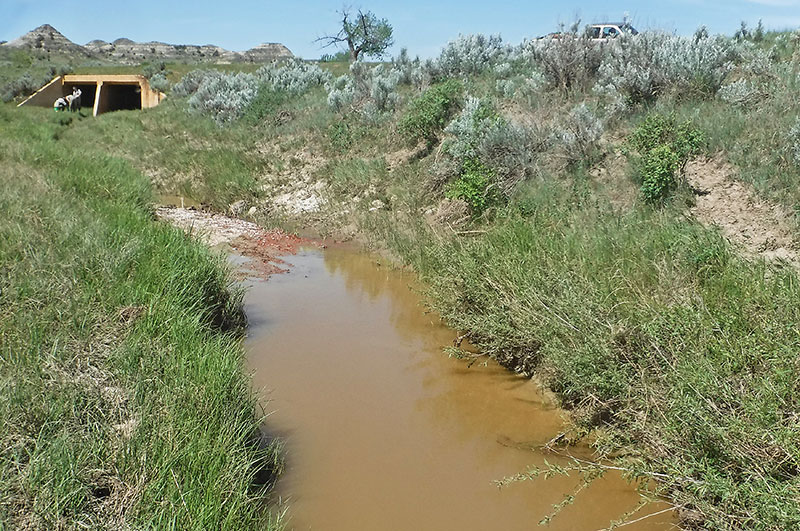
Davis Creek
In another study, researchers found that fish in the two stream types responded differently as stream flows decreased in late summer, and fish became more and more crowded in the remaining habitat. The more stable conditions in rolling prairie streams led to higher fish densities (up to 900 percent higher).
Throughout the Northern Plains, pools provide critical habitat for many fish species during low flow periods. Maintaining water in badland and rolling prairie streams is critical for survival of many of western North Dakota’s fish species. Even a stream reduced to a few intermittent pools can retain large numbers of small fish, as they wait for higher flows and opportunities to colonize new areas.
So the next time you are driving the backroads in the rolling prairies or badlands of western North Dakota and cross over a small, insignificant looking stream, or even an isolated pool in an otherwise dry creek bed, it may not be empty. Consider taking a closer look into the stream, as you may see some of the tough native fish species inhabiting it.
DENNIS SCARNECCHIA is a professor of fisheries at the University of Idaho. BRIAN STEPHENS was a graduate student at the University of Idaho when research for this article was conducted.
